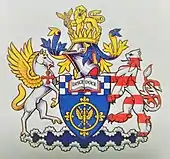Institution of Electrical Engineers
The Institution of Electrical Engineers (IEE) was a British professional organisation of electronics, electrical, manufacturing, and Information Technology professionals, especially electrical engineers. It began in 1871 as the Society of Telegraph Engineers. In 2006, it ceased to exist independently, becoming part of the Institution of Engineering and Technology (IET).

Notable past presidents have included Lord Kelvin (1889), Sir Joseph Swan (1898) and Sebastian de Ferranti (1910–11). Notable chairmen include John M. M. Munro (1910–11).

History
The IEE was founded in 1871 as the Society of Telegraph Engineers, changed its name in 1880 to the Society of Telegraph Engineers and Electricians and changed to the Institution of Electrical Engineers in 1889. It was Incorporated by a Royal Charter in 1921.
In 1988 the Institution of Electrical Engineers (IEE) merged with the Institution of Electronic and Radio Engineers (IERE), originally the British Institution of Radio Engineers (Brit IRE) founded in 1925.
By the mid-2000s, the IEE was the largest professional engineering society in Europe, with a worldwide membership of around 120,000. Discussions about a merger with the Institution of Incorporated Engineers (IIE) about the formation of a new institution started in 2004, and following membership voting, the IEE merged with the IIE on 31 March 2006 to form the Institution of Engineering and Technology (IET).[1][2]
IEE Global
IEE has a global presence, through having section offices in different countries around the world. This include Hong Kong.[3] India,[4] Greece[5] and Malta.[6]
See also
References
- "IET history". Institution of Engineering and Technology. Retrieved 19 November 2012.
- "Institution of Electrical Engineers". Nature. 158 (4006): 194. 10 August 1946. Bibcode:1946Natur.158Q.194.. doi:10.1038/158194a0.
- "IET Hong Kong Section".
- "IET India Section".
- "IET Hellas Network".
- "IET Malta Section".
External links